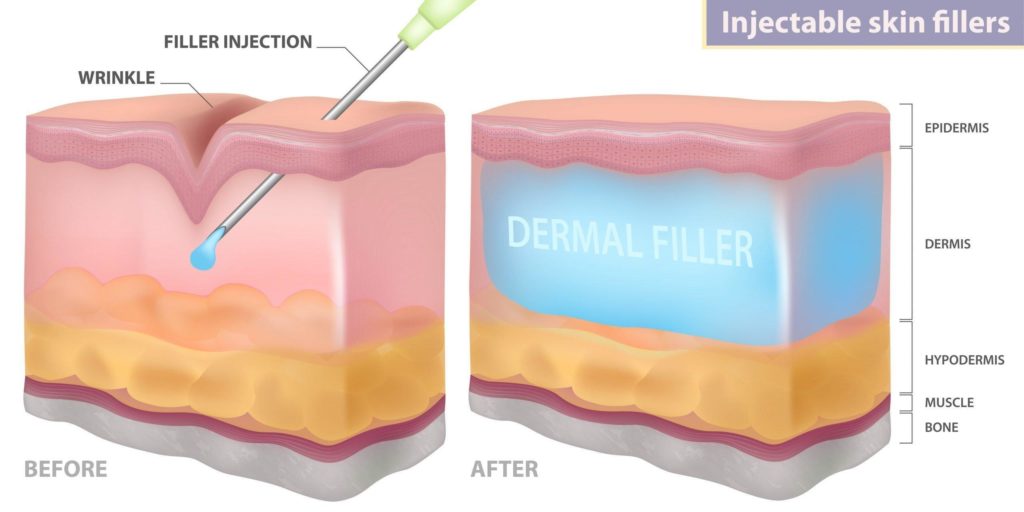Cosmetic Filler & Injection Surgery

What are Dermal Fillers?

Dermal filler injections are a nonsurgical cosmetic procedure used to restore volume, smooth fine lines, and reduce wrinkles in the face. By injecting a gel-like substance just beneath the skin, healthcare providers can enhance facial contours and create a more youthful, refreshed appearance. The treatment is quick—typically taking less than 30 minutes—and involves minimal recovery time. Most patients can resume normal activities immediately after the procedure, and results are visible right away. Depending on the type of filler and the area treated, effects can last from several months to over a year.
People choose dermal fillers for various reasons, including adding volume to the cheeks or lips, softening lines around the mouth, or improving facial symmetry. There are different types of fillers, such as hyaluronic acid, calcium hydroxylapatite, and poly-L-lactic acid, each suited to specific concerns. Your provider will help determine which option best meets your needs.
As with any cosmetic procedure, there are potential risks. Common side effects include temporary swelling, bruising, redness, or tenderness at the injection site. Less commonly, complications like infection or vascular occlusion may occur. Because dermal fillers are elective, they are not typically covered by health insurance.
Why do people get dermal fillers?
As we age, the body naturally produces less collagen, a vital protein found throughout the skin, muscles, bones, and connective tissues. This gradual loss of collagen contributes to skin laxity, reduced facial volume, and a thinner, less elastic appearance. Over time, the skin begins to sag, and wrinkles and fine lines become more noticeable.
Many people choose to receive dermal filler injections to counter these changes. Fillers can restore volume to sagging skin, enhance facial symmetry, and plump areas such as the lips and cheeks. They are also commonly used to smooth facial wrinkles and folds, creating a more refreshed and youthful appearance.
In some cases, dermal fillers are used for medical purposes. Certain medications prescribed for conditions like HIV or AIDS can lead to facial fat loss and thinning. For individuals experiencing this, fillers may help replenish lost volume and restore a more natural look to the face.
Kinds of dermal fillers
There are several types of dermal fillers available, including both synthetic (“off-the-shelf”) products and autologous options using your own body’s fat. In autologous fat grafting, healthcare providers harvest fat from one area of your body and inject it into your face to restore volume naturally. Among the synthetic fillers, some of the most commonly used include hyaluronic acid (HA), a naturally occurring substance in the skin that provides hydration and volume; results typically last six months to a year, with products like Restylane® being popular examples. Calcium hydroxylapatite (CaHA), found naturally in bones, is often used for deeper wrinkles and can last about a year, with Radiesse® as a well-known brand. Poly-L-lactic acid (PLLA) stimulates your body’s own collagen production, smoothing deep wrinkles with results that may last two years or more; Sculptra® is a common PLLA filler. Lastly, polymethylmethacrylate (PMMA) fillers combine collagen with tiny microspheres that provide long-lasting volume and firmness, with Bellafill® as a representative product. Your healthcare provider will review these options with you, helping to set realistic expectations and determine the best filler type based on your goals and individual needs.
See our full list of services:

